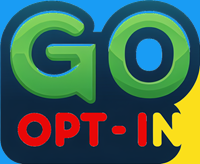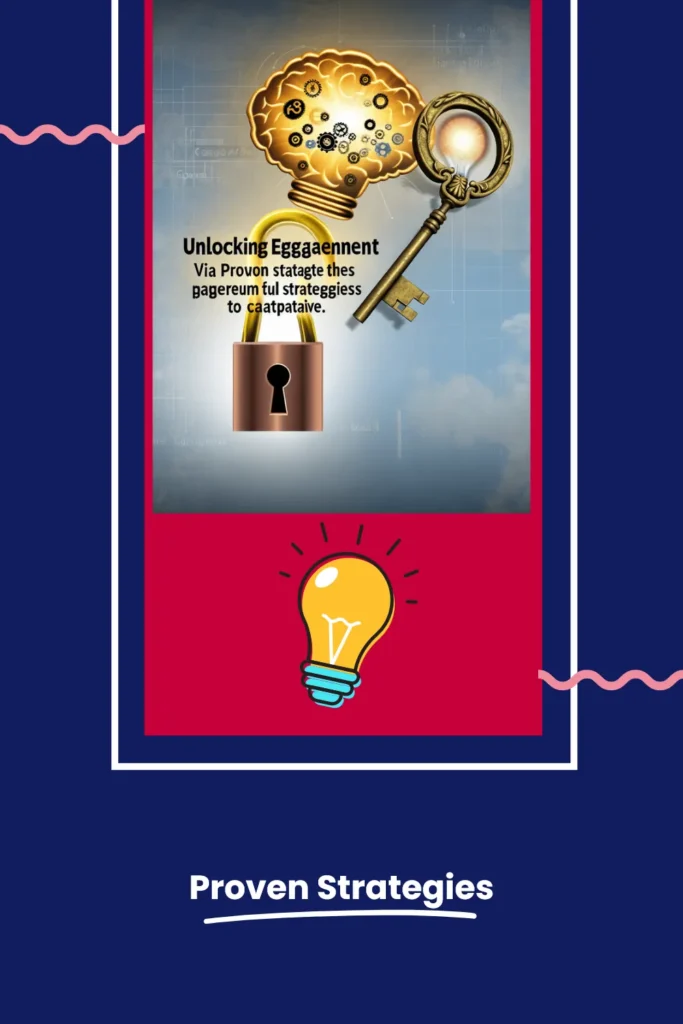The roar of applause, the glimmer of captivated eyes—there’s an indescribable magic in engaging an audience.
Yet, in a world overflowing with information, capturing and maintaining that attention can feel like an uphill battle.
Thankfully, the art of audience engagement is not as elusive as it may seem.
At its core, audience engagement is about connecting, resonating, and fostering a genuine interest in what you have to say.
From the very first words of your speech to the concluding remarks, how you present your message can profoundly impact the connection you make with listeners.
The strategies you utilize are not simply tools; they are the keys that unlock doors to deeper understanding and emotional resonance.
In this article, we will explore eight proven strategies to Unlock Engagement Proven Strategies to Captivate designed to elevate your audience engagement, transforming ordinary interactions into extraordinary experiences.
From the power of a dynamic opening hook to tailoring your content for relatability, you will learn how to captivate and inspire every listener in the room.
Table of Contents Unlock Engagement Proven Strategies to Captivate
The Concept of a Speech Hook
A speech hook is a strategic opening that captures the audience’s attention immediately, setting the stage for a memorable presentation.
Effective speech hooks are concise, engaging, and seamlessly integrate with the overall message of the speech.
They serve as the audience’s first encounter with a speaker’s perspective, making it essential to make a strong initial impact.
A memorable sound bite at the beginning of a speech amplifies listener engagement and solidifies the key message.
Famous quotes often serve as effective hooks, but careful paraphrasing is necessary to maintain their essence and recognizability.
Historical references, such as those used by Martin Luther King Jr.
, lend depth and relevance to a speech, enriching the audience’s understanding of the topic.
In crafting a speech hook, speakers should aim to align the hook with their intended audience—be it hostile, disinterested, or friendly—to ensure a connection that lasts beyond the introduction.
A powerful hook is not just a tool for grabbing attention but a foundational element for delivering an impactful and unforgettable speech.
Begin with the Unexpected: Capture Attention Instantly
In today’s fast-paced world, where the average attention span has plummeted to just eight seconds, capturing your audience’s attention instantly is more crucial than ever.
Begin with the unexpected by employing a strong opening hook.
This could be an intriguing statistic, a thought-provoking question, or a humorous anecdote that immediately grabs focus.
Moving around the stage can significantly reclaim attention, as shifts in physical presence compel attendees to refocus.
Incorporate elements like movie quotes or personal confessions to provoke curiosity, making your audience eager to engage.
These techniques not only captivate but also turn your presentation into a memorable experience.
Effective Attention-Grabbing Techniques:
- Strong Opening Hook: Use a statistic, question, or anecdote.
- Stage Movement: Relocate to maintain attention.
- Engaging Content: Movie quotes or personal stories.
By incorporating these strategies, you can transform a disinterested audience into a captivated one, ensuring your message resonates deeply.
Lead Generation Process
The lead generation process is a crucial aspect of any business’s marketing strategy.
It involves identifying and attracting potential customers who have shown an interest in your products or services.
Through various channels such as social media, email marketing, and content creation, you can capture leads and nurture them into qualified prospects.
By implementing a well-defined lead generation process, you can increase your chances of converting these prospects into paying customers and ultimately drive business growth.
Utilize Personal Stories: Making Connections
Utilizing personal stories in your presentations is an unparalleled way to captivate and connect with your audience.
Sharing personal narratives allows you to showcase a unique perspective that not only makes your message relatable but also builds trust.
This personal touch can engage an audience right from the start and make you irreplaceable in their eyes.
Effective speakers know that storytelling is essential to grabbing attention and provoking thought.
By weaving personal experiences into your speech, you invite your audience to think critically and engage more deeply.
This approach can help you resonate with a smaller group on a profound level, ensuring your message is not overlooked even if the audience is vast.
To create meaningful connections, consider these tips:
- Share relatable experiences.
- Include thought-provoking questions.
- Focus on authenticity.
- Tailor stories for different audience types (hostile, friendly, uninformed).
By embracing personal storytelling in your presentations, you pave the way for an engaging and memorable experience for your audience.
Ask Provocative Questions: Stimulating Thought
In the world of public speaking, asking rhetorical questions is a powerful tool to engage an audience.
These questions invite listeners to ponder silently, aligning their thoughts with those of the speaker, and activating critical thinking right from the start.
This technique not only captures attention but also encourages the audience to actively engage with the speaker’s message.
Incorporating personal storytelling further enhances this connection.
By sharing relatable experiences, speakers foster trust and make their message resonant.
This approach, combined with interactive elements like polling or direct questions, invites audience participation, transforming passive listeners into engaged participants.
To ensure a lasting impact, delivering a memorable phrase or sound bite at the outset can set the tone.
By establishing context early on, speakers can align their audience’s attention and ensure their message is not just heard but felt.
In these ways, thought-provoking questions serve as an effective hook, capturing attention and driving the audience towards deeper engagement in daily life.
This strategy, championed by effective speakers such as Dorie Clark, is a rule of thumb for captivating audiences from all backgrounds.
Incorporate Emotional Appeals: Engaging the Heart
Capturing the attention of your audience is a challenge many creators face, even when pouring their heart into their content.
However, incorporating emotional appeals can create an indispensable connection, transforming a disengaged or uninformed audience into a captivated one.
By addressing your audience’s goals, aspirations, and anxieties, you can make any message more relatable and impactful, keeping them engaged beyond the average attention span.
Using techniques like storytelling and the FUD (Fear, Uncertainty, Doubt) strategy can grip your audience by the heart.
Storytelling is a powerful tool, shifting understanding and perspective while resonating deeply.
It’s the authentic pulse of your message that helps maintain neck-down attention.
Similarly, addressing their potential fears or uncertainties helps engage their primal instincts, ensuring your message isn’t lost.
For effective speakers, writing from the heart is not just an art but a strategy.
This authenticity encourages a friendly audience to anticipate future content eagerly.
As Dorie Clark and Ralph Waldo Emerson highlighted, forging a genuine emotional connection is key in any presentation, helping you not only retain but grow your market share in that vast arena of daily life challenges.
Leverage Visuals: Enhancing Understanding
In today’s fast-paced world, the average attention span is dwindling, making it crucial for public speakers to captivate their audience quickly.
Visuals are powerful tools for grabbing and retaining neck-down attention.
Utilizing multimedia presentations, like video-enhanced PowerPoints or 3D animations, can make the content more compelling and easier to understand.
These tools transform a keynote speech into an intriguing experience, leaving a lasting impact on both friendly and uninformed audiences.
Incorporating interactive visual aids, such as a wall clock or juggling balls, can also serve as effective hooks.
They draw in even a potentially hostile or disinterested audience by making key points both memorable and engaging.
Effective storytelling paired with vivid visuals allows the audience to process information rapidly and develop a deeper understanding, akin to a memorable sound bite that echoes after a talk.
Consider starting with a captivating video to immediately capture attention.
Our brains are wired to interpret images quickly, enhancing comprehension when paired with descriptive language.
By investing in engaging visuals, you breathe life into your presentation, resembling a market trader who knows the art of capturing an audience’s imagination, ultimately gaining market share in their interest and attention.
Use Humor: Lightening the Mood
Incorporating humor into presentations can significantly lighten the mood, making speeches more enjoyable for audiences.
Even non-comedians can enrich their presentations by allowing their natural sense of humor to shine through, creating a more relatable and authentic connection without forcing jokes.
Humor enhances relatability, helping speakers connect with listeners on a personal level.
Sharing personal anecdotes as humorous confessions can foster a deeper connection, transforming a room’s chemistry and positively influencing audience dynamics.
This approach not only entertains but also persuades.
When used effectively, humor persuades and leaves a memorable impact.
By tapping into humor, speakers can transform the audience’s experience, making it more engaging and memorable without losing professionalism.
Inducing laughter is a powerful tool that speakers should leverage to ensure their message resonates.
Relatability: Making Content Accessible to All
Relatability is the key to making your content accessible and captivating to your audience.
Infusing personal perspectives and lived experiences into your writing can forge irreplaceable connections, making your content more engaging and relatable.
This approach often resonates more deeply, ensuring a stronger bond with your audience, even if it’s smaller.
It’s crucial to target your content to a specific audience, rather than trying to capture everyone’s attention.
Resonating deeply with a smaller group can be more impactful than failing to engage a large one.
Additionally, use unique quotes or proverbs to offer fresh perspectives, providing memorable sound bites that enrich your message.
Keep your messages simple and avoid unnecessary complexity.
This ensures that your content is easily digestible in today’s fast-paced digital landscape.
Start engaging your audience early, perhaps with an interactive activity, to immediately foster a connection and enhance relatability.
Tips for Relatable Content:
- Share personal stories
- Use unique quotes and proverbs
- Keep messages simple
- Engage early with interactive elements
This approach ensures your audience finds your content relatable and worth their attenuated attention spans, akin to capturing fish with effective fishing hooks.
Understanding Your Audience: Tailoring Your Approach
Understanding your audience is crucial for capturing attention, especially in an age where the average attention span is dwindling.
Personalizing your message not only boosts engagement but can also lead to actionable outcomes, such as purchases.
Coca-Cola’s “Share a Coke” campaign is a prime example of how tailored communication can enhance connection and prompt consumer action.
Telling personal stories can transform a disinterested audience into an engaged one.
It fosters trust and relatability, enabling your message to penetrate deeper.
By aligning your content with your audience’s needs and interests, you demonstrate a profound understanding that resonates powerfully.
Begin with an effective hook or memorable sound bite to draw in an audience, whether on stage or online.
This first impression, akin to fishing hooks for attention, sets the theme and context.
Crafting an intriguing introduction is essential, particularly in video content where viewers can easily scroll past.
Engage through techniques like eye contact and tailored storytelling, ensuring your audience feels seen and understood.
Remember, the key is to transition seamlessly from capturing attention to maintaining it throughout your message, paving the way for a more connected and abundant life for both you and your audience.

